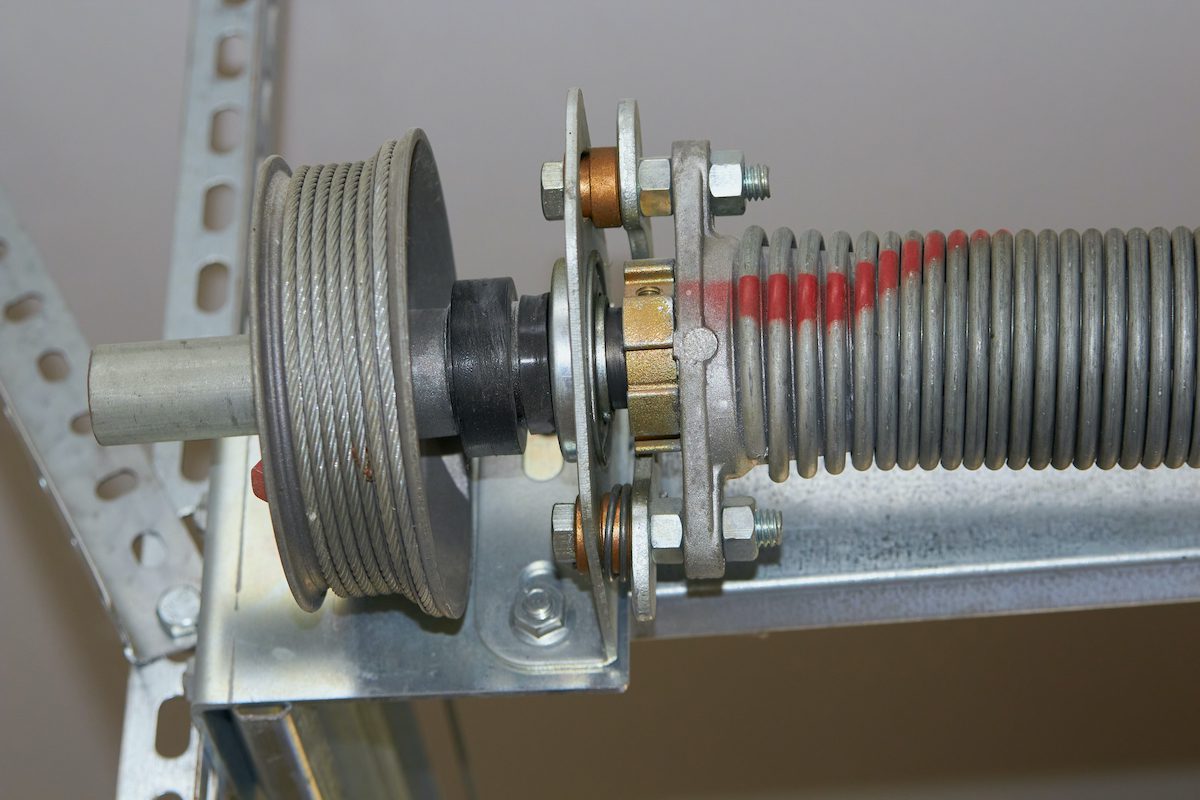
Encountering a broken garage door cable can be more than just an inconvenience; it’s a significant safety concern. Trying to operate a garage door with damaged springs or cables is not only difficult but potentially hazardous. This is where Overhead Door Company of Huntsville/North Alabama™ steps in, offering expertise in handling such challenging situations.
The Daily Wear and Tear of Garage Doors
As we explore why a garage door cable might break, it’s imperative to first shed light on the dynamics of garage door springs. Their function not only supports the seamless operation of your garage door but also significantly influences the longevity and reliability of the cables. Let’s embark on a detailed journey to uncover the interplay between these vital components and how understanding this relationship is key to solving and preventing common garage door issues.”
Given that garage doors are frequently used for daily access, they undergo substantial wear and tear. Each cycle of opening and closing exerts pressure on the door’s mechanical components, especially the springs and cables, which are crucial for its operation.
Let’s Begin with Garage Door Springs
The Importance of Garage Door Springs
Understanding the intricacies of the garage door’s spring and cable system is vital for maintaining its functionality and ensuring safety.
Types of Garage Door Springs
- Torsion Springs: These springs are situated at the top part of the garage door. They lift and lower the door through a coiling mechanism, offering balanced pressure and enhanced efficiency.
- Extension Springs: Found when there is limited overhead space, these springs expand and compress to operate the door. They are more prone to instability and can be riskier than torsion springs.
Both types carry high tension and are integral to the door’s operation, with the cables acting as a bridge between the stored mechanical energy in the springs and the movement of the door.

The Synergy Between Springs and Cables
- Interdependent Operation: The cables and springs work in unison, making a comprehensive understanding of both critical for effective maintenance and troubleshooting.
- Safety Concerns: High tension in these components requires cautious handling to prevent accidents.
- Load Distribution: The springs bear the door’s weight, aided by cables for even distribution and smooth operation.
- Lifecycle and Maintenance: Regular inspections and understanding wear signs help in proactive maintenance, avoiding unexpected failures.
Types and Roles of Garage Door Cables
Torsion Spring Cable System
These cables, connected to the torsion springs, facilitate the lifting of the door. Snapped cables are a common issue and can hinder the door’s ability to open, signaling the need for immediate repair.
Extension Spring Cable System
Cables accompanying extension springs are vital for containing the springs should they break, preventing potential injuries or property damage.
What Might Cause Your Garage Door Cables to Break and Come Loose
- Age or normal wear-and-tear. Garage door cables can and will break from time to time.
- Cables can break simply due to their age. Just like every other component, cables experience wear and tear. These cables may eventually become frail and snap over time.
- A garage door set down on an object will create an uneven weight distribution and slack in the cables on one side of the door. This slack will cause the cable to jump across the grooves in the drums, causing issues. The crooked garage door in the opening is most often caused by closing the door on top of an obstruction.
- A broken extension spring. A broken torsion spring. It’s always best to have a two-torsion spring setup when the option is available. The second spring can temporarily keep some tension on the cables until repairs are made if one spring breaks. When a single spring breaks, the door doesn’t have a backup; this can cause slack in the cables causing them to slip out of the grooves.
- Corrosion. Garage door cables can break because of rust. If you don’t catch it quickly, rust can eat through a cable, causing the cables to corrode.
- Wrong spring configuration. The door won’t work properly if these springs are not calibrated or installed per manufacturer specifications.
- Wrong cable drum configuration.
- Loose set screws.
- Excessive manual force.
- Fraying is another reason garage door cables can snap. Many little wire cables twist together to create a stronger and thicker cable. Broken cables can cause fraying of the surrounding cables, leading to the cable snapping.
- Incorrect cables installed for the weight of the door.
- Loose or uneven installation.
- Defective cable assembly.
- Sometimes the pulleys get worn. If this happens, the cable will not slide through as smoothly, and you’ll notice your door becoming stuck or cocked towards one side. If this is the case, replacing the pulleys is a must.
- Worn out roller wheels.
- Bent door sections.
- Bent track or unlevel track that can cause the garage door to catch or bang rather than roll smoothly.
- Broken brackets or drums.
- Poor maintenance.
Why Does a Garage Door Spring Break?
When Cables Break, Avoid Using Your Garage Door, Even Manually
Broken cables can cause extra tension to transfer onto the other cable, putting tremendous strain on it. The garage door can become unbalanced and crooked by this. If your garage door starts shaking, creaking, or acting strangely, it could be a problem with the cable. If a cable is damaged or frayed, the only option is to remove it and use a new cable to replace it. We highly recommend you call a professional for this.
Opening or closing a garage door with loose or frayed cables can be dangerous. The remaining cable could snap, causing the door to crash down to the floor or get stuck halfway in the opening.
You should not open or close your garage door using your garage door opener if it has a broken cable. The added force needed to lift the door could strip the internal nylon drive gear. Broken cables can lead to more damage, resulting in more expensive repairs. You should always leave any damage to the professionals to avoid any injuries. Call for service immediately.
Why You Shouldn’t Fix your Garage Door Cable Yourself
Garage door cable repairs should be performed by a professional. Each year, thousands of people are hurt trying to fix broken garage doors every year. Don’t attempt to repair a garage door —instead, contact professionals for a reliable, safe repair.
Overhead Door Company of Huntsville/North Alabama™ can diagnose and repair any garage door cable that is fraying or has snapped. Our technicians are skilled in diagnosing the problem and getting your garage door running smoothly again. We promise to provide a high-quality garage door repair service at an affordable cost, no matter the problem.

Overhead Door Company of Huntsville/North Alabama™
Your Repair Partner
We specialize in:
- Diagnosing the cause of cable failure.
- Repairing related damages to the door.
- Replacing broken or worn components.
- Balancing the door for smooth operation.
- Adjusting spring tension for optimal performance.
- Checking and ensuring proper functionality of the door opener.
Extended Service for Long-Term Reliability
In addition to immediate repairs, we also focus on long-term maintenance.
- Periodic inspection of all garage door components.
- Lubrication and adjustment of moving parts.
- Assessment of door alignment and track condition.
- Review of safety features and automatic reversal systems.
- Guidance on preventive maintenance practices.
Conclusion
Understanding and maintaining the spring and cable system of your garage door is crucial for safety and efficient operation. Regular maintenance, coupled with professional repairs, is key to ensuring the longevity and reliability of your garage door. Trust the experts at Overhead Door Company of Huntsville/North Alabama™ for all your garage door needs, ensuring safety, efficiency, and peace of mind.
Visit Our Troubeshooting Guide
Making Garage Door Repairs Simple For You
Disclaimer: The information contained herein is not meant to be comprehensive and is for informational purposes only. You should not undertake to perform anything described herein without adequate training and/or supervision. Overhead Door Company of Huntsville/North Alabama™ disclaims any responsibility for any injury, damage, or loss as a result of reliance upon the information found on this site/blog.





